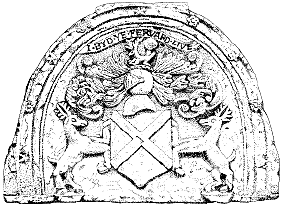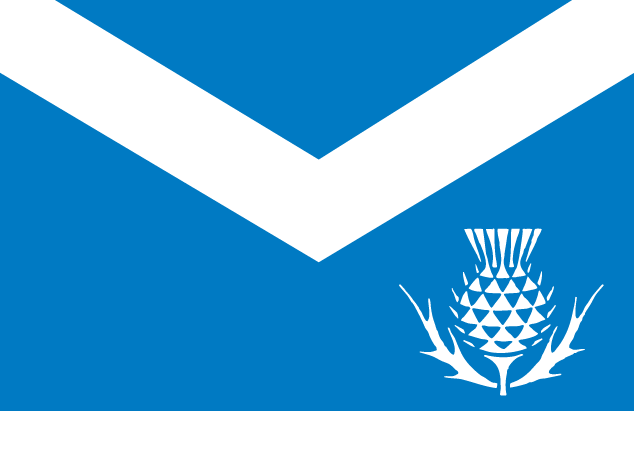
Clan Maxwell

Caerlaverock Castle is perhaps more readily identified
with Clan Maxwell than any other historical site.
A Brief Maxwell History
The progenitor of the Maxwells, Herbert de Maccusweil, flourished under the kings Malcolm IV and William I in the second half of the 12th century. He appears to have been Chancellor either of the Abbey at Kelso or to the King himself at nearby Roxburgh Castle. The name Maccusweil is derived from Weil, a fishing pool, and Maccus, a former owner of lands to the south of the river Tweed. It is true to say that the sons of Maccus were living contemporaries of Herbert; however, there is no formal evidence to link them as related. The family of Maccus appear to have names of Norse or Anglo-Scots origin while etymological evidence seems to point to Herbert's forebears being of Norman or at least Anglo-Norman stock.Herbert’s sons held high office in the courts of William and Alexander II, including that of Great Chamberlain of Scotland, the Sheriffdoms of Roxburgh, Teviotdale and Dumfriesshire, and the Justiciary of Galloway. Their rewards for service were equally rich: the great barony of Caerlaverock on the Solway coast and the lands of Mearns and Nether Pollok in Renfrew and Dryps and Calderwood in Lanark through the judicious marriage to the daughter and heiress of the highly favoured Roland de Mearns.
The Tealing Armorial stone dates from the early 16th
century and was originally set in the walls of Tealing House

Two Branches
From these estates sprang the two great branches of the Maxwell family. The northern branch was headed by the Maxwell's of Pollok with their cadets of Calderwood, Newark, Stainley and Auldhouse, and, more recently, Farnham and Springkell. In the south, on the gulf stream kissed coast of the Solway firth, was the mighty Caerlaverock Castle, the great powerhouse of the Lord Maxwell, from whom all other branches of the noble name descend.Throughout the perilous and trying times of the Wars of Independence, the Maxwells, like many other Scottish nobles repeatedly changed sides. In 1300, their great castle of Caerlaverock was besieged by a powerful English army under Edward I, the event being recorded in great detail by a contemporary chronicler under the title of the Roll of Caerlaverock. Sir Eustace Maxwell embraced the cause of John Balliol and received an allowance from Edward II for "the more secure keeping of the Fortress.” Later he threw his hand in with the Bruce and dismantled his fortress for the Scottish defense, for which he was liberally rewarded by Robert the Bruce. This knight also signed the Declaration of Arbroath in 1320 and went crusading under the good Sir James Douglas with the heart of the Bruce after his death in 1329.
As was usual with border families, the chiefs of the Maxwells were by no means consistent in their course or steady in the allegiance to the Scottish crown; however, they contrived in the end to be on the winning side, and honours, offices and estates continued to accumulate in the family. They became hereditary Wardens of the Western Marches, Stewards of Kirkcudbright and Annandale, Ambassadors to England and Provosts of Edinburgh. About 1445, Sir Herbert Maxwell of Caerlaverock was created a Lord of Parliament, and in 1455, on the forfeiture of the Douglases, he was granted Eskdale and Carlisle, the second title being somewhat dubious as Carlisle remained steadfastly in English hands.
In 1513, John the fourth Lord Maxwell and three of his brothers fell at Floddon, and he was succeeded by his eldest son Robert who grew to be one of the most prominent and ablest men of his age. He certainly stood high in the esteem of King James V, for he was created an Extraordinary Lord of the Session in 1532. In 1536, he was appointed a member of the Council of Regency, and in the following year he was one of the Ambassadors to the French Court who negotiated the marriage of James to Mary of Guise and for whom he espoused as proxy. It was this Lord Maxwell who introduced and secured the bill in the parliament of 1542 that gave the Scottish people the right to possess and read the Bible in the common tongue.
His eldest son was Robert, sixth Lord Maxwell, and it was during his time that the greatly ruinous feud between the Maxwells and their neighbors, the Johnstones, escalated. Johnstone was courted on all sides: by the English, fearful of Maxwells power on the border; by the Regent, who harbored a claim to the lands of Morton; and by the thieves and brigands of the Middle Marches whose activities were curtailed by Maxwell in his Warden role. Under such pressure, Johnstone was finally induced to break his bonds of manrent with the Lord Maxwell and the feud intensified.
Lord Maxwell's younger brother was Sir John Maxwell of Terregles, who, like his father, was a very able man and one of Scotland greatest nationalists. As a young man he had held Lochmaben Castle against the English during Henry VIII's rough wooing. Later, while holding true to the reform church, he became one of Mary Queen of Scots staunchest supporters, which subsequently cost him greatly. Following his brother's early death, he became tutor to his nephews, the infant sons of Lord Maxwell, and was then known by the title “Master of Maxwell,” wielding the mighty forces of the family. During the reign of the Queen and the regency that followed, Sir John called them to arms many times. He married Agnes Herries, eldest daughter and heiress to Lord Herries, and through her came the vast estates of that family to the Maxwells. In 1566, Sir John became Lord Herries, and two years later Queen Mary spent her last days on Scottish soil under his protection.
Lord Maxwell, Sir John's brother, had been married to Beatrice Douglas, granddaughter of James III, daughter and co-heiress to the fourth Earl of Morton. From this alliance, the second and posthumous son, John, eighth Lord Maxwell, was able to push home his legitimate claim to the Earldom, which he secured in 1581. John Maxwell, Earl of Morton, was a less judicial man than his uncle and was often in trouble for his open defiance of the Regent and later King James VI. He was a devout catholic at a time when most of his church were very discreet in their devotions. His untimely adherence to the popish cause lead him to travel to the Low Countries and thence on to Spain where great preparations were being made for the Armada. On his return to Scotland, he roused his loyal followers around his new banner which now incorporated the double headed imperial eagle of the Holy Roman Empire, it being his belief that Spain would attack England through Scotland and so re-establish the old faith in both the kingdoms. Alas for Morton, King James did not share his views and summoned him to Edinburgh where he was imprisoned in Blackness Castle. After the fiasco of the Armada, Morton was released to return home to the feud with the Johnstones which cost him his life at the battle of Dryfe Sands.
His son, also John, was even less disposed to leading a quiet life than his father and greatly endangered the family's estates by his relentless pursuit of revenge for his fathers death. This eventually led him to murder the Johnstone chief, an act for which he was eventually executed. His younger brother Robert was restored in 1620 to the "lands, rents living, teinds, offices and dignities" that belonged to his predecessors. This last patent set forth that Maxwell should go by the title of Earl of Nithsdale. Unlike his brother, Nithsdale was a man of peace. He ended the feud between the Maxwells and Johnstones when he "choppit hands" with Johnstone on 17th of June 1623 before the Privy Council.
The Earl of Nithsdale zealously supported the Royalist cause during the Civil War, and he garrisoned his castles of Caerlaverock and Thrieve in the Kings name, holding out to besieging forces for thirteen weeks. When no relief could be sent, the Earl, with King Charles' approval, surrendered on very favourable terms. However, the nobleman was siezed in 1643, the following year, and he died in exile on the Isle of Man. His son Robert, second Earl of Nithsdale, was restored in 1647 by an Act of Parliament, but the estates of the family were so heavily burdened from losses sustained during the Civil War that he was forces to sell parts of the vast inheritance. The second Earl had no children, and the Earldom passed to his kinsman John Maxwell, Lord Herries, great grandson of the great John, Lord Herries.
William, Fifth and last Earl of Nithsdale was a Jacobite supporter. He "came out" in the 1715 rebellion and was taken prisoner after the capitulation at Preston. He was taken to the Tower of London and brought to trial for High Treason in the House of Lords. After pleading guilty, he was sentenced to death by the Lord Chancellor. On the night before his execution he escaped from the Tower wearing women’s clothing, in a daring plan devised and carried out by his devoted wife. He died in the exiled Jacobean court in Rome in 1744. His only son was restored to the now heavily indebted estates but not the dignities. When he died without male heirs in 1776, the chiefdom passed via the Maxwells of Breconside to a distant cousin, the George Maxwell of Carruchan, who's line died out with his grandson William in 1863. Since then the Maxwells have remained a family without a chief.
[Tidbits and Trivia...]

